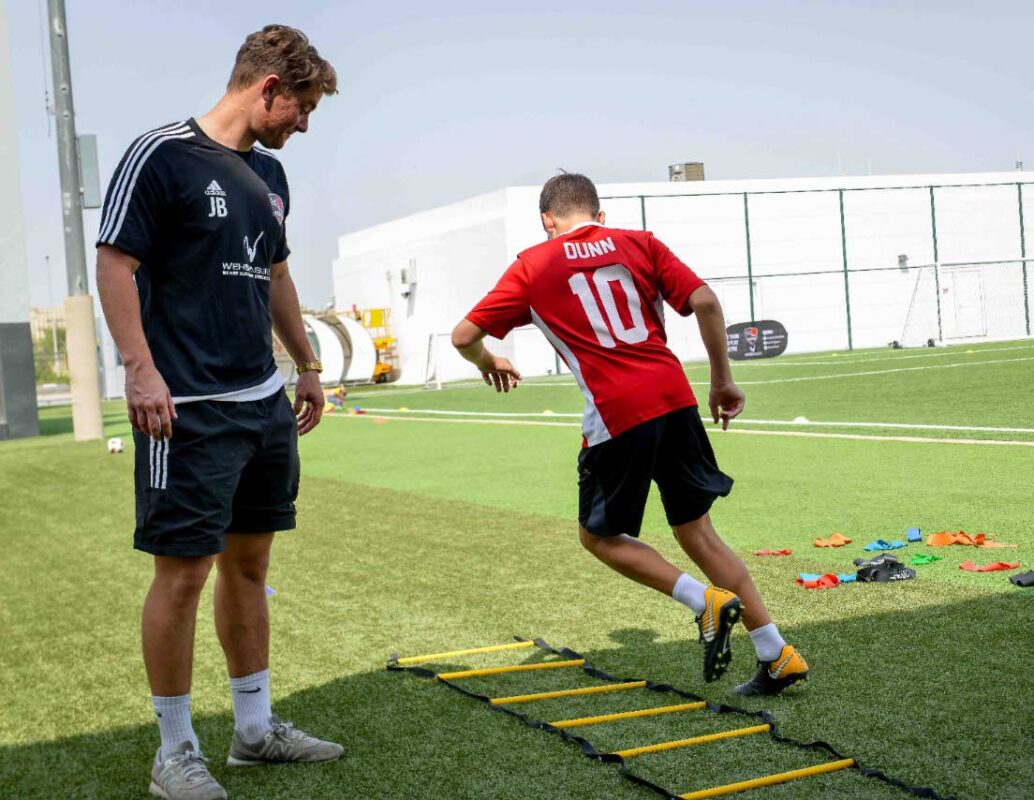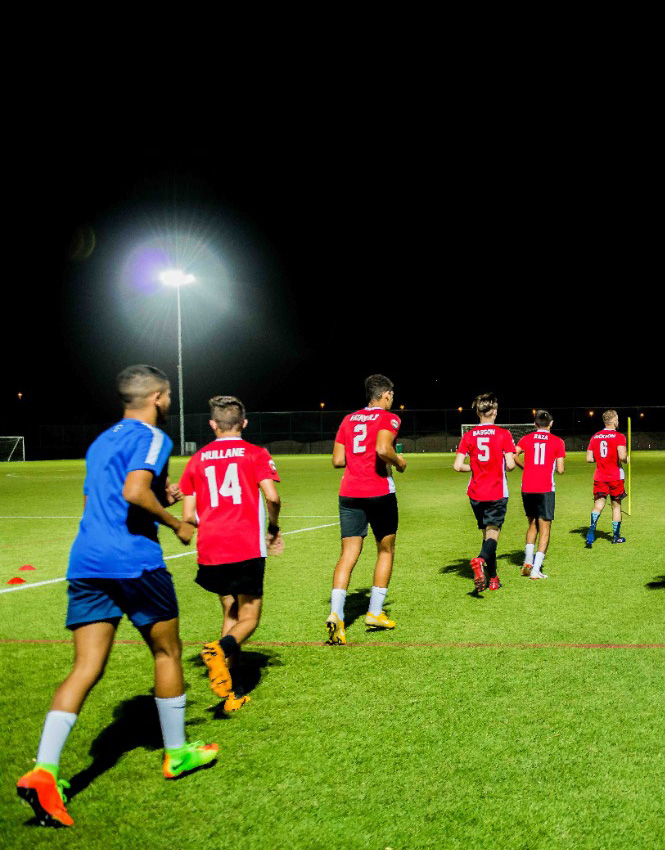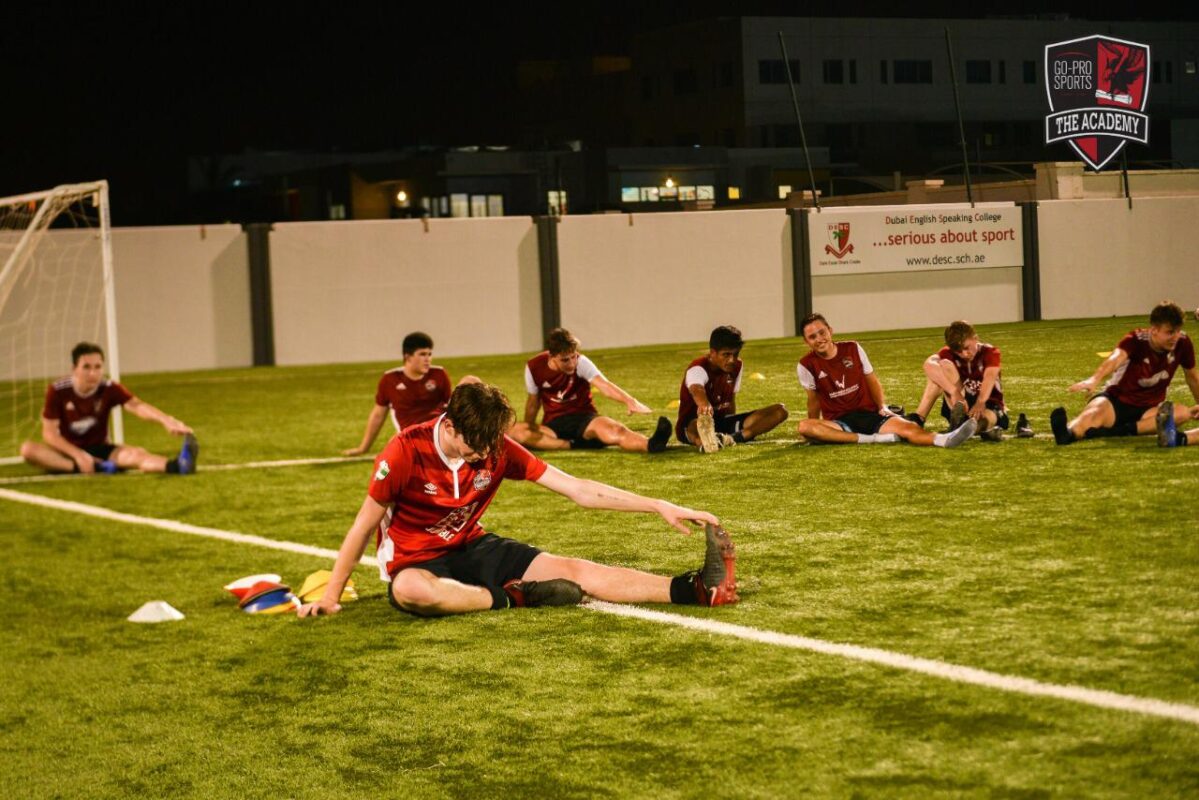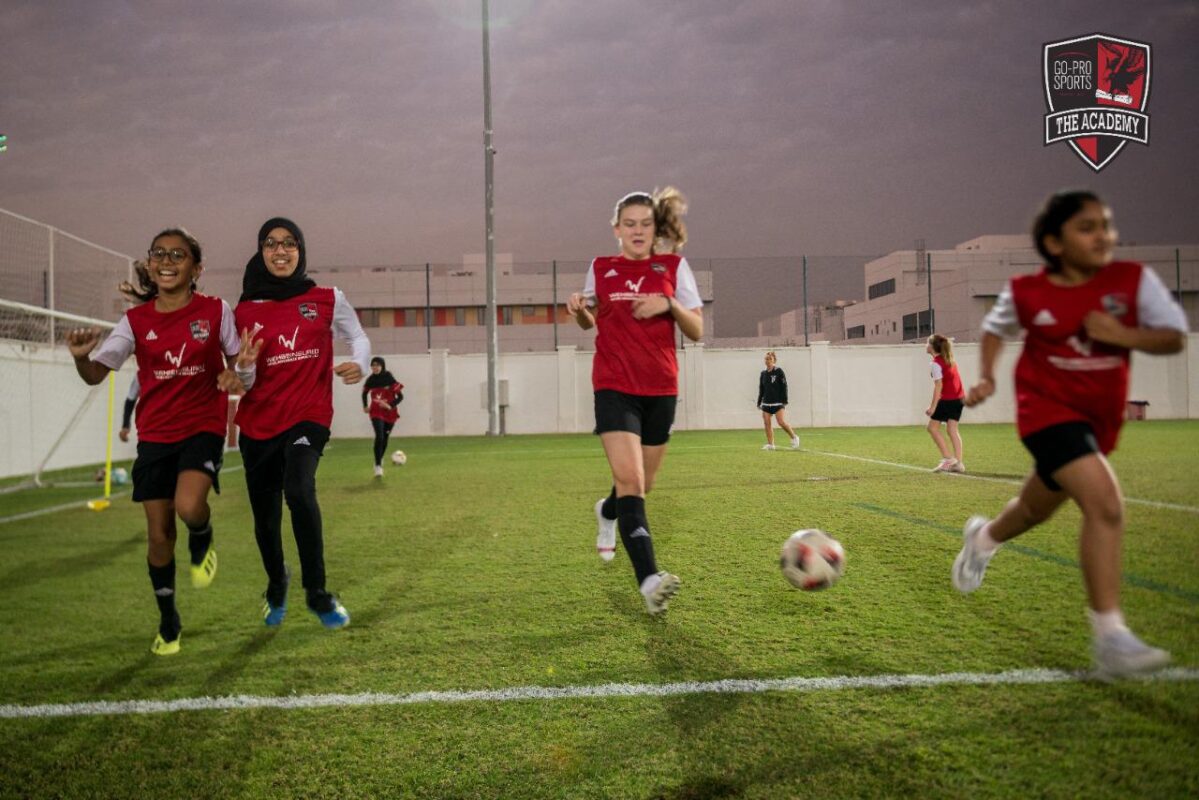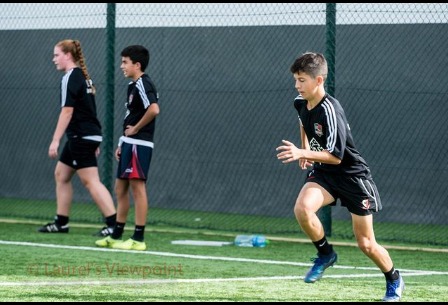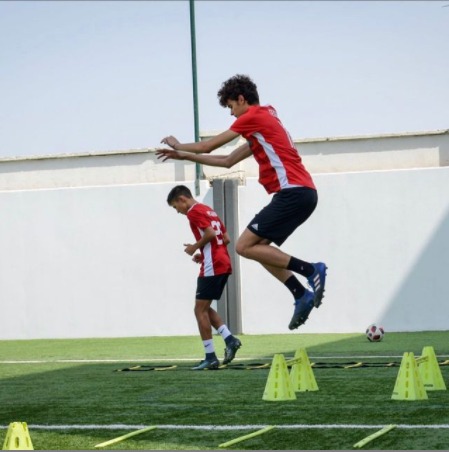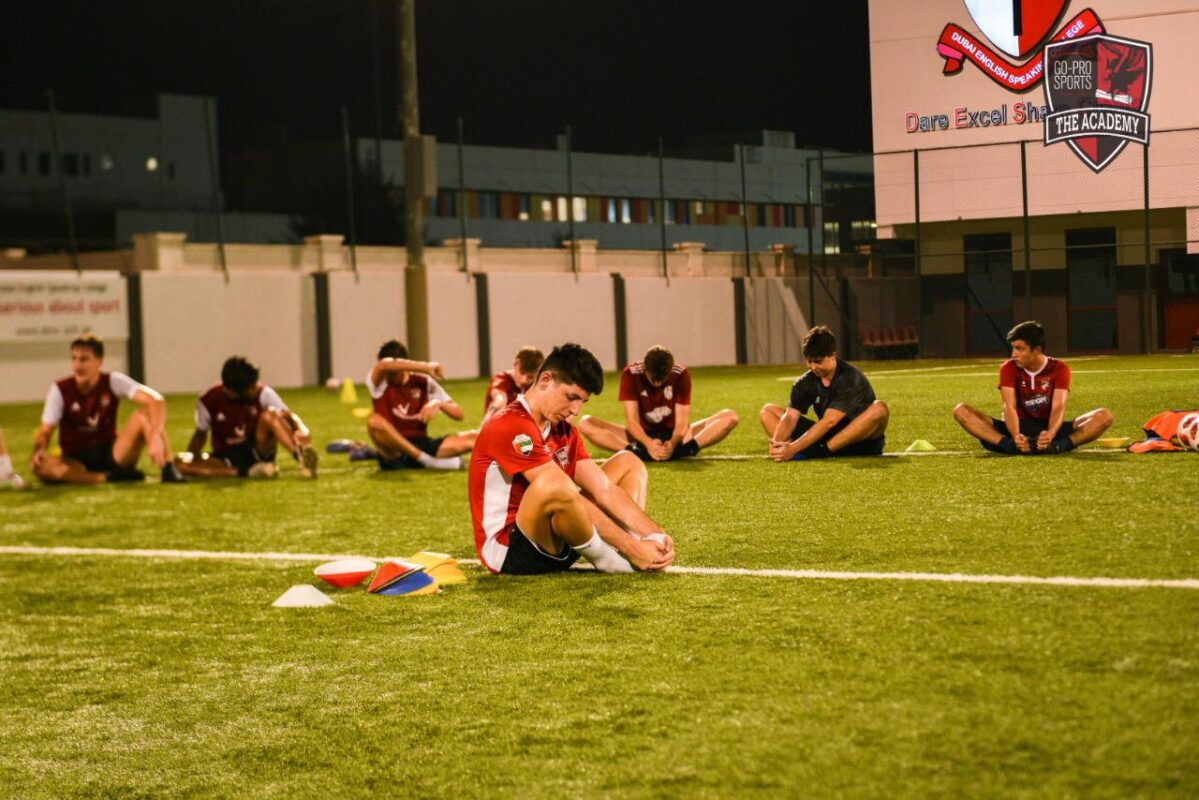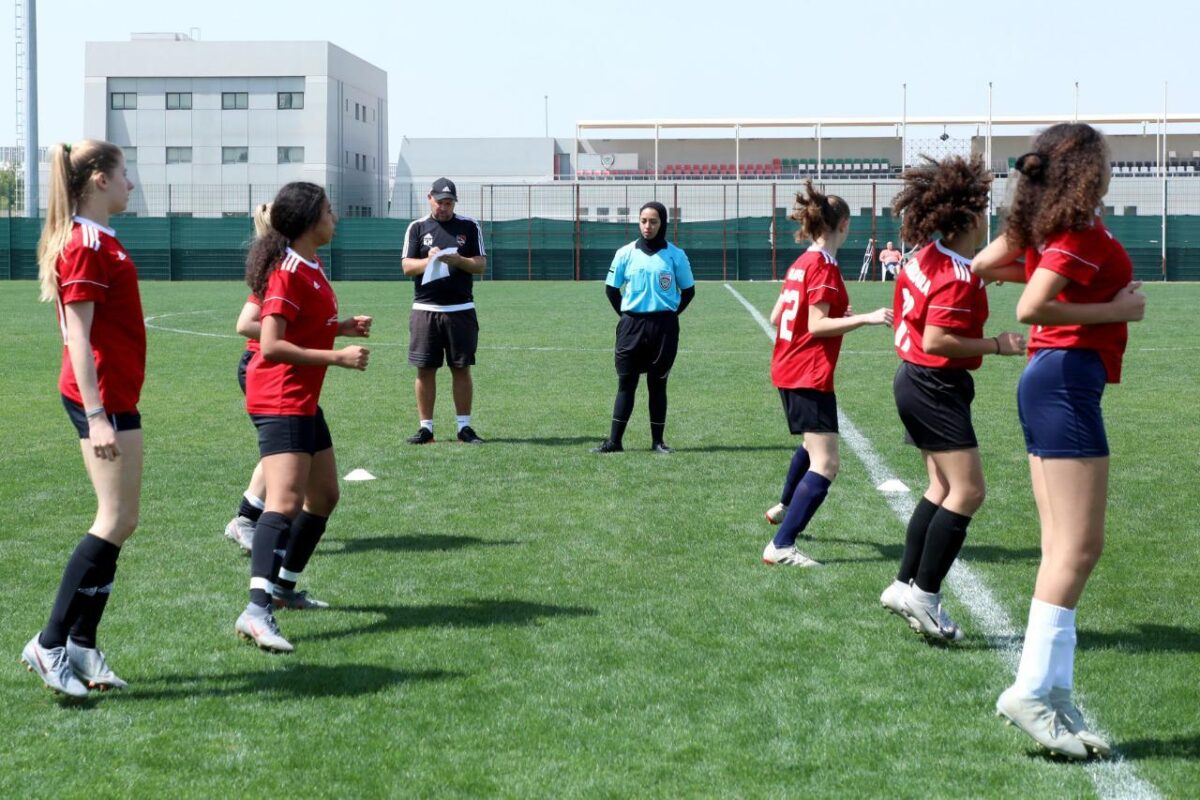FOOTBALL FITNESS – HOW TO GET FOOTBALL FIT!
When attending Go-Pro Football Academy Dubai getting into real shape for football at our boys football academy and our girls football academy requires an amalgamation of training methods. You have to be powerful, quick, agile and flexible and have a ‘good engine’.
Conditioning for football has travelled light-years in the last decade. Pro clubs are determined to get as much out of their multi-million-pound investments as they can. Therefore, sports science plays a massive part and players are subject to rigorous physiological assessment and testing. You may not have quite the same backup team to ensure your football fitness, but what can you do to achieve optimum condition?
Surveys indicate that hamstring strain rates were linked to the amount of static stretching Premiership footballers performed. During boys football training and girls football training the more ‘bend down and touch your toes and hold’ stretching they did, the more they were likely to strain their hamstrings in practice and matches. This may come as a surprise, but it should not when you consider football’s physical requirements. Players have to make repeated dynamic movements, such as sprints, jumps and turns. Research from Finland discovered that in season, players could make 3900 jumps and 7000 turns, for example. These movements require dynamic muscular contractions; contractions that have little relevance to those involved in static held stretches. Most top clubs now employ dynamic warm-ups, which place a much greater emphasis on active and football relevant dynamic mobility.
Football specialist, Professor Angel Spassov a conditioning expert based in the US, has worked with six World Cup squads has put together a specific football warm-up. This can be used and incorporated into our warm ups to side-step injuries that could have been be avoided.
Spassov’s warm-up involves both passive and active elements. For the passive part, players should loosen their muscles 30-60 minutes before the game/training session, by rubbing their ankles, knees, all the leg muscles, lower back, neck and shoulders with a heating ointment, preferably one that is odourless and not too hot on the skin.
The active warm-up that follows is divided into two parts:
1. General
Start with 6-8 minutes of jogging, followed by the neck, shoulder, lower back and abdominal stretches. There should be 2-3 different routines, with 10-12 repetitions of each.
Next, legs (hamstrings, hip flexors, abductors, adductors, quads and calf muscles) are targeted with passive (held) and dynamic stretches (2-3 standard routines with 10-12 reps with performance speed increased every set for the dynamic stretches, such as leg swings).
Next varying-intensity sprints are performed in different directions. At the end of this part of the warm-up, players’ pulse rates should have reached 160-170 beats per minute.
2. Specific
Start with 6-8 minutes of jogging, followed by the neck, shoulder, lower back and abdominal stretches. There should be 2-3 different routines, with 10-12 repetitions of each.
Next, legs (hamstrings, hip flexors, abductors, adductors, quads and calf muscles) are targeted with passive (held) and dynamic stretches (2-3 standard routines with 10-12 reps with performance speed increased every set for the dynamic stretches, such as leg swings).
Next varying-intensity sprints are performed in different directions. At the end of this part of the warm-up, players’ pulse rates should have reached 160-170 beats per minute.
All players require speed. Everything else being equal, the faster you are, the better player you will be! However, football speed is different to the speed required of a sprinter.
• Football speed is reactive and often unpredictable
Your training must reflect the above considerations. Use these practices to improve your football speed:
Improve your first step
Incline your trunk forwards and piston your legs back behind you whilst pumping your arms backwards and forwards as fast as you can. Look at Cristiano Ronaldo, and how he modifies this sprinting skill when dribbling. Practice!
Developing power for football
Footballers are athletes in every sense of the word. All will resistance train. Their training plans will involve body weight, weights and plyometric (jumping) exercises. Weight training will provide foundation strength for more specific football conditions, such as speed, to be built.
Squats, lunges, leg extensions and leg curls (with the latter, concentrate on the lowering phase of the movement to reduce potential hamstring strain). Lift a medium to heavyweight (70-80% of 1RM) using 6-10 reps over 2-4 sets. Everything else being equal a larger muscle will be more powerful and enduring.
Can weight training make you a net buster?
Research has indicated that improving kicking power directly through weight training or other means is unlikely to produce positive results for greater kicking power. You will get greater returns by working on your technique. However, greater muscle power can significantly improve other aspects of play, such as your leap and sprinting and injury resilience.
Bodyweight exercises
The dreaded ‘burpee’ (squat thrust with a jump at the end) still has a place in football conditioning, and other bodyweight moves, such as press-ups and sit-ups. Put them into a circuit that lasts (with recoveries) 20 minutes and contains ball skills, and you are onto a winner.
Incorporating ‘keepy-uppy’ and short distance passes between players in a circuit will condition-specific power and skill endurance – the ability to perform a precision skill under conditions of fatigue is crucial for football players.
Pay particular attention to core strengthening exercises, such as crunches and ‘chinnies’ (alternate knee to elbow sit-ups), hyper (back) extensions and the plank. A strong and dynamic core is required to maintain player solidity on the ball and reduce injury.
Football specific core strength exercise
– sit-up with a header?
Sit on the floor with knees bent to a 90-degree angle as per regular sit-up. You will need a partner who should carefully toss a football toward you as you reach the top of your sit-up. At this point, you head the ball back to him. You then control the descent of your body as it returns to the floor. Complete 10 over 4 sets swapping positions with your partner..
Football specific circuit
Perform at a ’20 seconds on 30 seconds’ off basis – Press-ups, squat jumps, crunch, keepy-uppy, simulated headers (alternating left, double, and right foot leaps from a static or one stride approach), the plank, wall passes over 5m alternating left to right foot strikes, burpees, chinnies, single-leg squats, sit-ups with header (see above), 10m sprints (back and forwards), floor ladder drill. See more about our football coaching sessions in dubai
Forget the 10-mile runs; football is an anaerobic (stop/start) activity. You will be much better off performing various pace running repetitions over distances from 10m to 100m with short recoveries. Some workout examples:
• Twenty minutes of jogging, sprinting, walking and half speed and three quarter paced runs. Coach (or the fittest player taking part) determines the distance to be run and the recovery by calling out, for example, ’20m sprint, walk 40m three-quarter pace run, jog back’ and so on. This drill should be contained within one half of the pitch.
Use these practices and drills in your pre-season training and maintain your fitness with them in-season and you will be challenging for the title (whatever your level) come next spring.
This article first appeared in:
• SHEPHERD, J. (2007) Football Practice – how to get football fit. Brian Mackenzie’s Successful Coaching, (ISSN 1745-7513/ 47/ November), p. 11-12
Page Reference
If you quote information from this page in your work, then the reference for this page is:
• SHEPHERD, J. (2007) Football Practice – how to get football fit [WWW] Available from: https://www.brianmac.co.uk/articles/scni47a5.htm [Accessed 19/2/2021]
About the Author
John Shepherd is a specialist health, sport and fitness writer and a former international long jumper.
Article disclaimer
The opinions expressed in this article are the authors own and do not necessarily reflect the views of Go-Pro Sports Academy LLC
